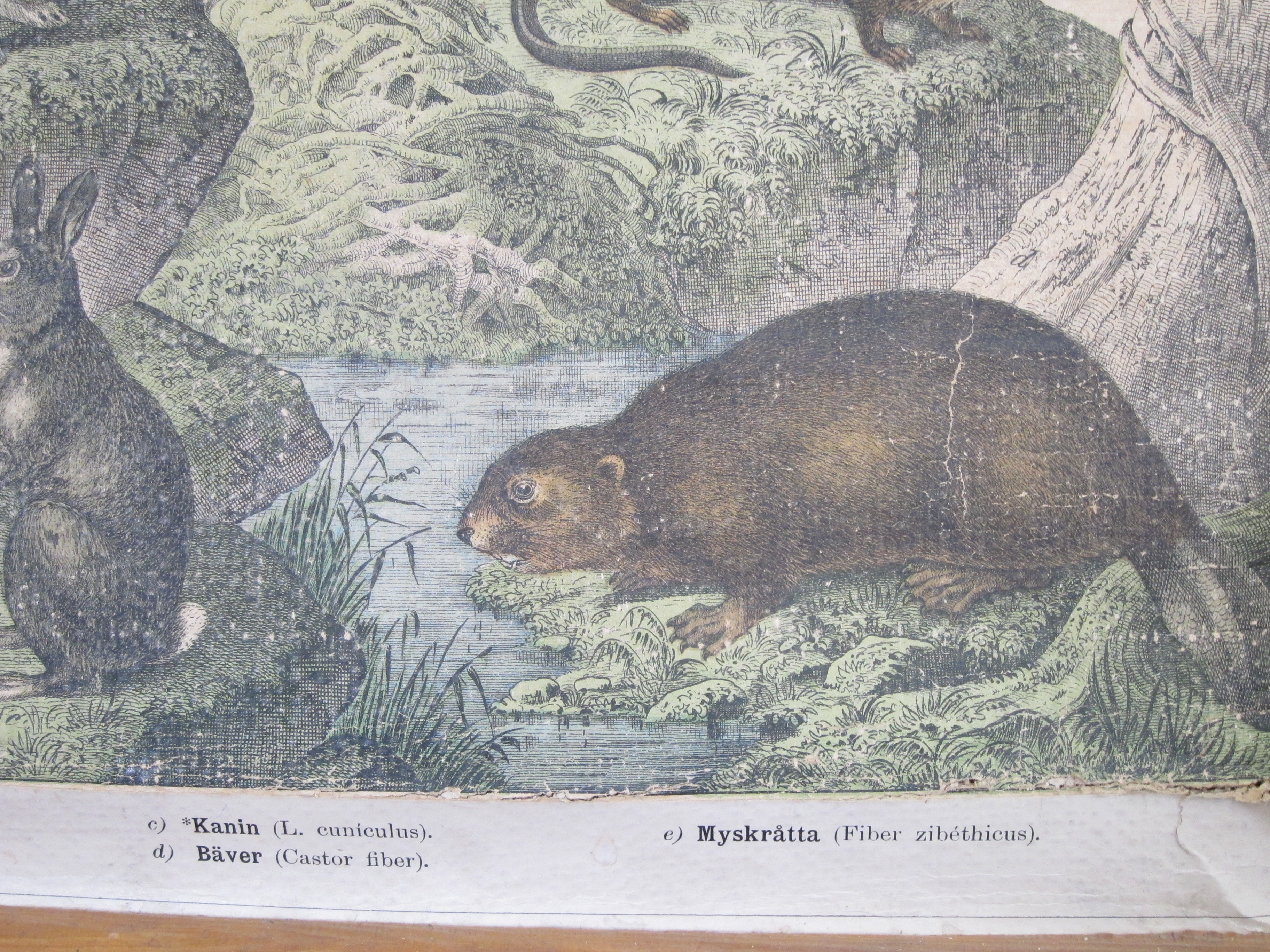
School posters
This week during the Framing Nature conference in Tartu, Estonia, I went on a field trip that visited a 19th century school house. Oskar Luts, an Estonian writer, had attended the parish school in Palamuse, Estonia, from 1895 to 1899 and his most famous (and first) book Kevade (Spring) is set at the school. If you want to read about the school, a one-page summary in English is here.
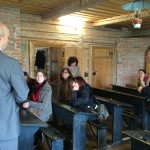
The school house was large building with living quarters for the school master (who was the parish clerk), the school room, kitchen, and sleeping room for the boys (girls were added in a separate part after Luts’ time).
The school room had a harmonium for music lessons, benches with ink wells, and posters on the walls. The posters included a map, a depiction of the major races of the world, and a group of nature posters. The nature posters were labelled in Russian and included small mammals, fish, insects, plants, and birds.

These types of visuals would have been indispensable in a 19th-century or early 20th-century school. The posters were in full color and while some of them depicted local flora and fauna that the students might be able to observe outdoors, other animals would have been more likely unseen. Not unlike the nature programs we watch on TV, these images could be used by teachers in natural history lessons.
This reminded me of the numerous school posters from Sweden that I have been collecting digitally. I’ve been looking for items that include beavers to determine whether or not they are shown as part of Swedish or Nordic fauna. Here are a few of those with some comments about their context.
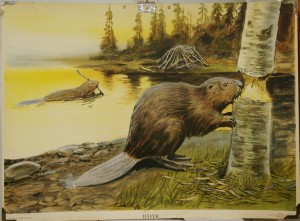
My interest in school posters started when I saw a 1932 school poster drawn by Nils Tirén, a well known Swedish painter (1885-1935) who specialised in animals. It was produced as part of a series of posters called “Svenska djur” (Swedish animals) published by Norstedt in Stockholm starting in the 1920s. It is noteworthy that the beaver had only been back in Sweden since 1922, 10 years before Tirén painted the work. In spite of its 50-year absence and recent return, the beaver was considered by Tirén and Norstedt as an integral part of the Swedish fauna.
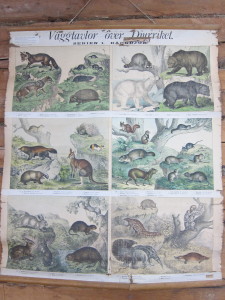
This poster of animal diversity (djurriket) is currently hanging in the school building of Gammlia, the outdoor section of the Västerbottens Museum in Umeå. The poster was taken down from Varpsjö school on 16 April 1953. The date that the poster was made it not clearly marked. The panel on the lower left includes a beaver, which is labeled with the Swedish name and scientific one, “Bäver (Castor fiber)”. Because the poster includes animals from across the world–for example, a kangaroo is in the left middle picture–an asterisk (*) is used to indicate which animals are found in Sweden. In the lower left picture, the Nordic hare (Lepus timidus) and the rabbit (L. cuniculus) are marked with the *, but beaver is not. So according to this poster which hung in a school until 1953, beavers were not found in Sweden. I’m a bit surprised that the teacher didn’t take a pen and add a * next to beaver!
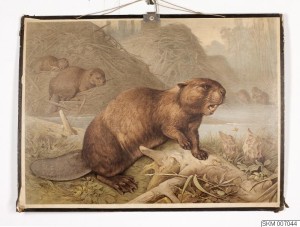
This poster was made in Leipzig, Germany between 1900 and 1910 as part of a series of zoological posters and sold in Sweden by Swanström & Co. in Stockholm. The interesting thing about this one is the impressive height of the beaver dams, which is clearly what the artist is emphasising. Since there were few beavers in Germany at the time, the artist may have actually been depicting North American beavers, which tend to make much larger dam structures than European beavers.
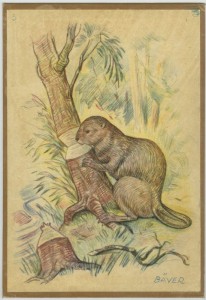
This drawing of a beaver gnawing a tree (labeled only Bäver) was used in art education as part of a series of drawings of animals, people, plants, and ornamental designs that served as models for the students. It was produced by Skolförlaget Gävle / Jönköpings Tändsticksfabriks Tryckeri in mid-Sweden in the 1940s. This particular exemplar was used at Norra skolan in Vänersborg in southwestern Sweden in the 1940s. It is now in the Vänersborgs museum collection.
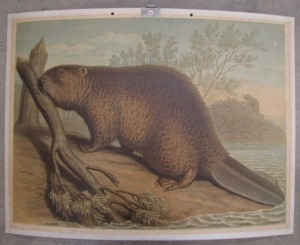
This poster is also in the Vänersborgs museum. It does not have a date. According to the catalog information, it is labeled (I assume on the back since it is not in the picture of the front) as “Castor Fiber — European beaver, more or less endangered”. Such a label would have certainly been appropriate anytime in the first half of the 20th century.
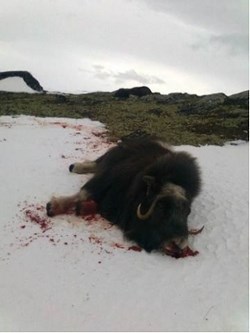
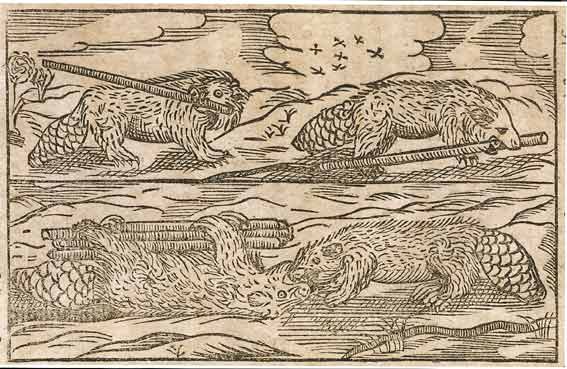

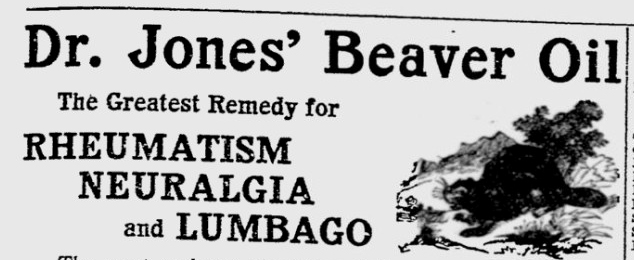
5 Comments
Pingback:
Tom Mensink
Hi Dolly, if yoy go to my site http://www.collectiontrade.com and search for “Bever” in the top right corner under “Product zoeken”, you will find most wall charts in the world with a beaver on it. Clicking on the title of a chart will bring you to the details, which includes the first publication year. Sorry it is all in Dutch.
dolly
Thanks, Tom. Those are some great school posters. What a nice collection you’ve put together!
Tom Mensink
Thanks Dolly. Of course this is a collection of photo’s only, not the actual plates.
Tom Mensink
By the way, I noticed that the search results started with a bear chart, which is not a bever as we know :-). Error in the catalogue, corrected now, the search should only return real bevers.
http://www.collectiontrade.nl/cms/index.php?keyword=bever&Search=Zoeken&Itemid=1&option=com_virtuemart&page=shop.browse
My own collection of charts concerns the “Stork”. Have a lot of beatiful stork plates from all over the world. Good luck with the bevers in Sweden!